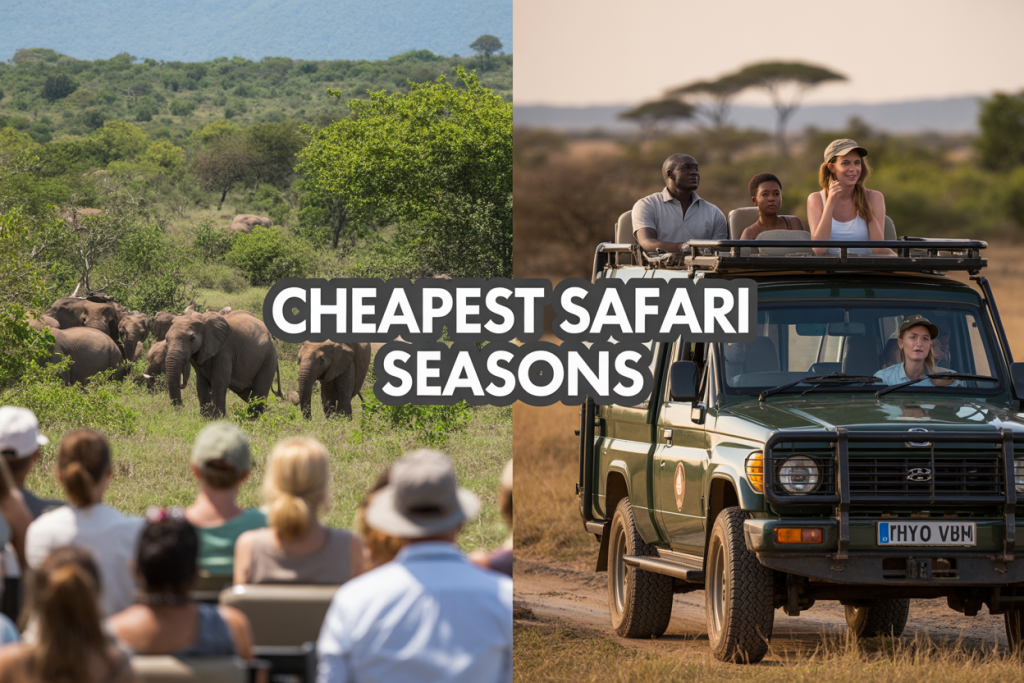
Planning a safari doesn’t have to drain your savings account. Smart travelers know that timing can slash safari costs by 30-50%, making African adventures accessible for budget-conscious explorers, families saving for their dream trip, and anyone wanting maximum wildlife value for their money.
The cheapest safari season typically runs during each region’s shoulder and low seasons, when fewer crowds mean better deals on accommodations, tours, and flights. You’ll discover how seasonal pricing patterns work across different safari destinations, from Kenya’s Maasai Mara to South Africa’s Kruger National Park.
We’ll break down the best months for affordable safari experiences in major wildlife regions, showing you exactly when to book for maximum savings. You’ll also learn how to balance budget considerations with wildlife viewing quality, so you don’t sacrifice amazing animal encounters just to save money. Smart timing means you can witness incredible wildlife moments while keeping more cash in your pocket.
Which Month is best for safari
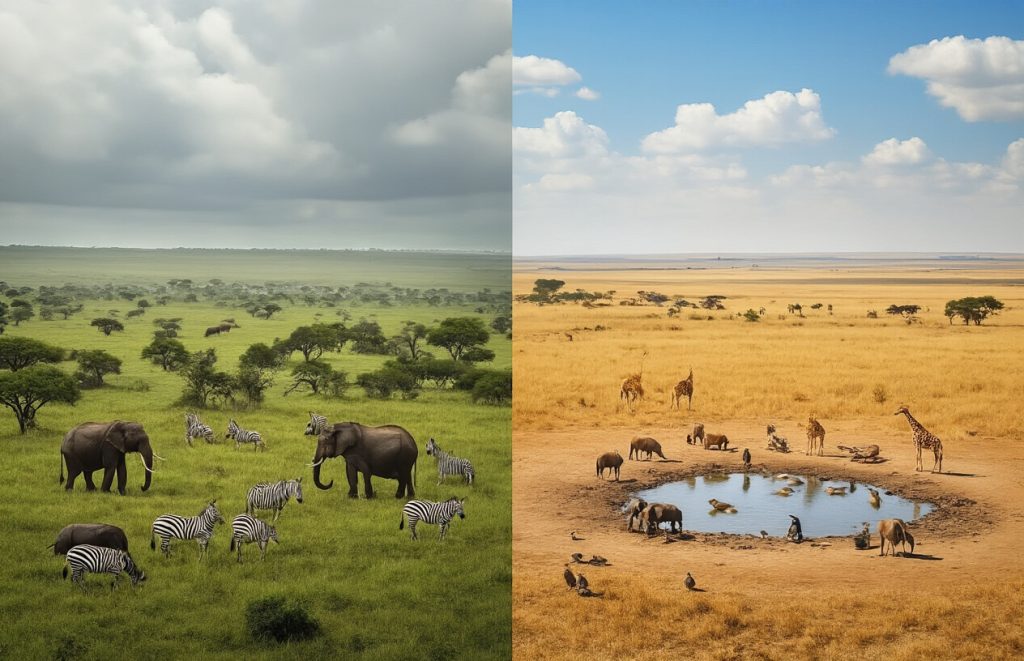
January through March bargain hunting opportunities
The first quarter delivers exceptional safari cost savings, with January through March representing the cheapest safari season across most African destinations. Post-holiday demand drops dramatically, creating low season safari deals that can slash prices by 30-50%. Many lodges offer significant discounts during these off-peak safari travel months, making it prime time for budget-conscious adventurers. The rainy season coincides with this period in many regions, but wildlife viewing remains excellent with fewer crowds and lush landscapes.
May shoulder season sweet spots
May stands out as the ultimate shoulder season for affordable safari experiences, bridging the gap between peak and low seasons. Safari pricing by month shows May offers substantial savings while maintaining favorable weather conditions in most destinations. This transitional period provides budget safari months with excellent wildlife viewing opportunities, particularly in East Africa where the Great Migration creates spectacular scenes. Accommodation rates drop significantly, yet game drives remain productive with comfortable temperatures and minimal rainfall.
November pre-peak pricing windows
November represents the final opportunity for off-season safari opportunities before holiday premiums kick in. This pre-peak window offers some of the year’s best safari cost savings while delivering outstanding wildlife experiences. The short rains begin in many regions, creating dramatic skies and excellent photography conditions. Safari operators often extend their low-season rates into early November, making it ideal for travelers seeking cheapest safari destinations without compromising on quality game viewing experiences.
Low Season Safari Opportunities by Region
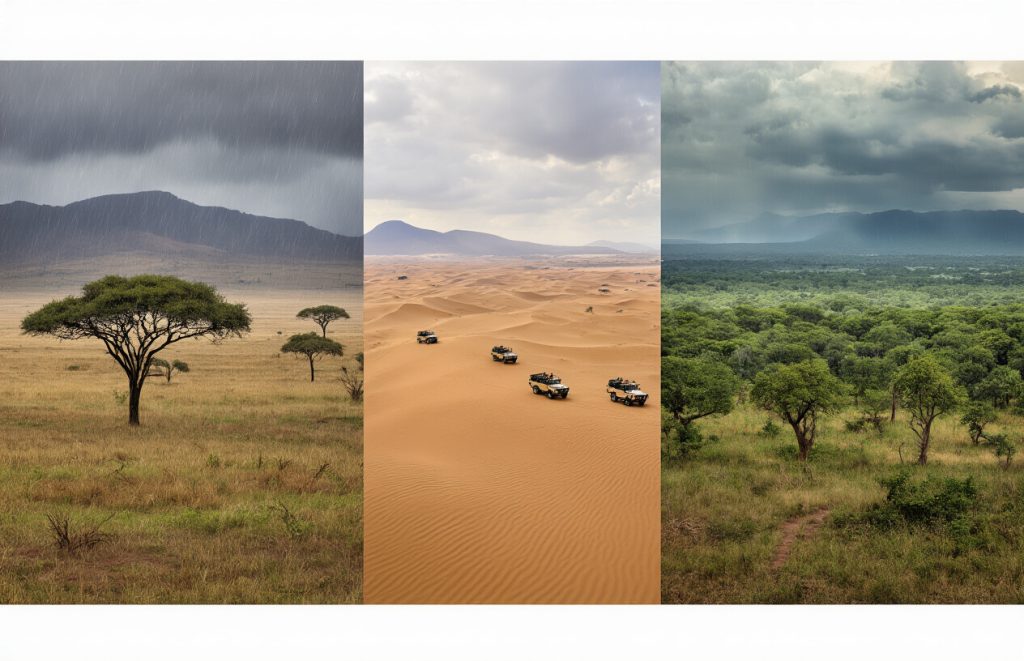
East Africa’s shoulder season advantages
East Africa’s shoulder seasons (March-May and November) offer the cheapest safari season with dramatic cost reductions. Kenya and Tanzania slash accommodation rates by 30-50% during these periods. Wildlife viewing remains excellent as animals concentrate around permanent water sources, making this the best time for affordable safari adventures without compromising game drives.
Southern Africa’s winter safari bargains
Southern Africa’s winter months (May-September) deliver exceptional off-season safari opportunities with reduced crowds and lower prices. Botswana, Zimbabwe, and Zambia offer significant discounts during their dry season, when wildlife congregates around rivers and waterholes. Cool temperatures create comfortable game viewing conditions while budget safari months provide maximum value for safari cost savings.
Botswana’s flood season value deals
Botswana’s flood season (December-April) presents unique low season safari deals despite being peak water levels in the Okavango Delta. Many camps close or reduce rates significantly during this period, offering adventurous travelers substantial savings. While some areas become inaccessible, the lush landscapes and prolific birdlife create a completely different safari experience at fraction of dry season costs.
Money-Saving Benefits of Off-Peak Safari Travel
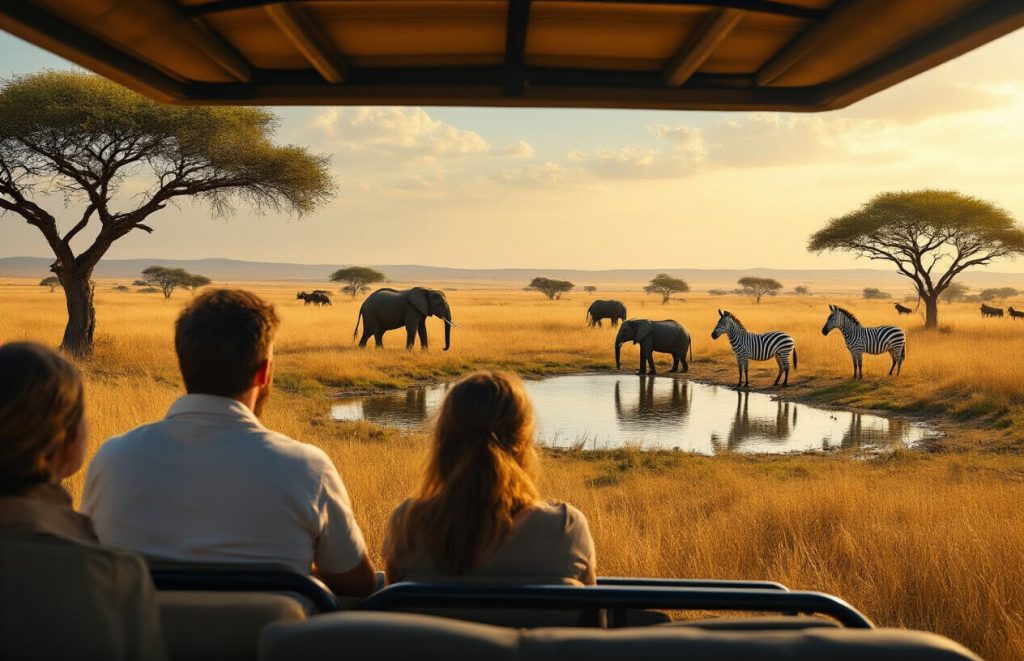
Accommodation discounts of up to 50%
Safari lodges and camps slash prices dramatically during the cheapest safari season to fill empty rooms. You’ll find luxury accommodations offering rates 30-50% below peak season prices, making high-end properties suddenly affordable for budget-conscious travelers. Some exclusive camps even throw in complimentary extras like spa treatments or guided walks to sweeten the deal.
Reduced flight costs and package deals
Airlines drop fares significantly during off-peak safari travel periods, especially for routes to popular safari destinations. Package deals combining flights, accommodation, and ground transfers become incredibly attractive during low season safari deals. Tour operators also bundle activities at discounted rates, delivering exceptional value that’s hard to find during busy months.
Lower guide and vehicle rental fees
Private guides and safari vehicles cost considerably less when is safari cheapest. Local operators reduce their daily rates by 20-40% to maintain bookings during quieter periods. This means you can afford longer game drives, specialized photography safaris, or even private guides that would normally stretch your budget beyond limits during peak season.
Fewer crowds for better wildlife viewing
Visiting during budget safari months means sharing waterholes and prime viewing spots with significantly fewer vehicles. This creates intimate wildlife encounters without the circus atmosphere that can develop around big game sightings in busy seasons. You’ll capture better photos, enjoy peaceful moments in nature, and experience the authentic wilderness feeling that draws people to Africa.
Enhanced personal attention from staff
Lodge staff, guides, and camp managers have more time to focus on individual guests during off-season safari opportunities. Service becomes more personalized, guides share deeper knowledge about local wildlife and culture, and staff can accommodate special requests more easily. This elevated attention transforms your safari from a standard tour into a truly memorable adventure.
Understanding Safari Seasonal Pricing Patterns
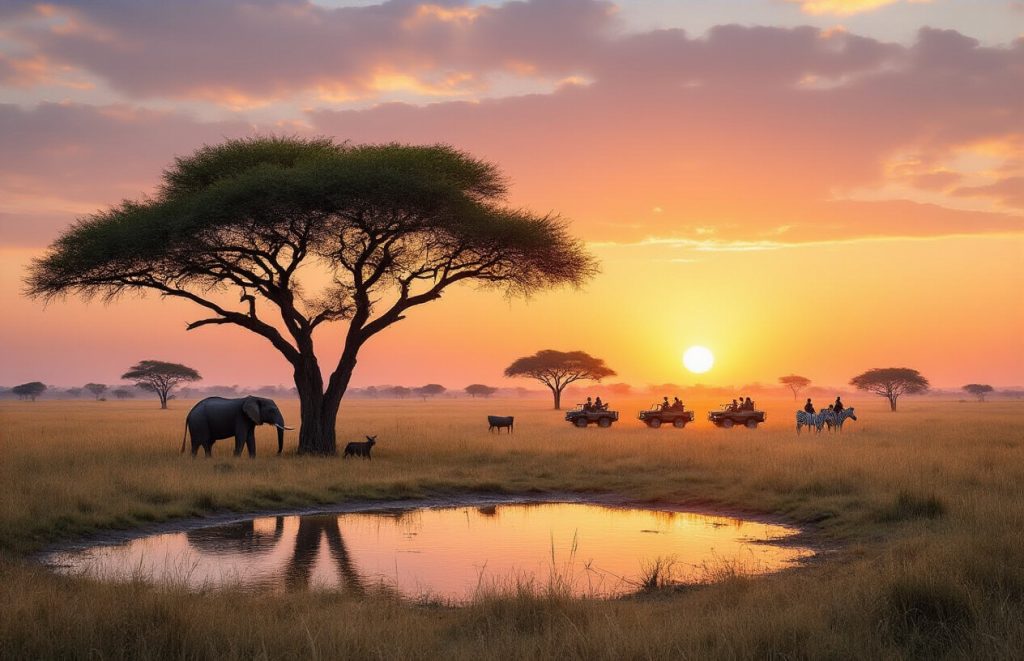
How weather cycles affect safari costs
Weather patterns directly drive safari pricing across Africa. During dry seasons, wildlife congregates around water sources, making game viewing predictable and driving up demand. Rainy seasons bring lush landscapes but muddy roads and scattered animals, leading operators to slash prices by 30-50%. The cheapest safari season typically falls during these wet months when accessibility challenges reduce tourist numbers significantly.
Peak vs off-peak season pricing differences
Peak season safaris command premium rates, often doubling off-peak prices. East African peak periods (June-October) see lodge rates soar to $800-2000 per night, while low season safari deals drop to $300-800. Southern Africa follows opposite patterns, with May-September being most expensive. Budget safari months like April, May, and November offer identical wildlife experiences at fraction of peak costs.
Regional variations in seasonal pricing
Safari pricing by month varies dramatically across different African regions. Kenya and Tanzania peak during Great Migration months, while Botswana’s dry season premium runs May through October. South African game reserves reverse these patterns, with rainy summer months (November-March) offering the cheapest safari destinations. Namibia bucks trends entirely, maintaining relatively stable year-round pricing due to consistent desert conditions.
Impact of wildlife migration patterns on rates
Migration timing creates dramatic price swings across safari destinations. Serengeti calving season (January-March) brings lower rates despite excellent wildlife viewing opportunities. River crossing periods (July-August) spike prices 200% above off-season safari opportunities. Smart travelers target shoulder periods when migrations approach but haven’t peaked, securing off-peak safari travel rates while enjoying spectacular animal concentrations and optimal photography conditions.
Balancing Cost Savings with Safari Experience Quality
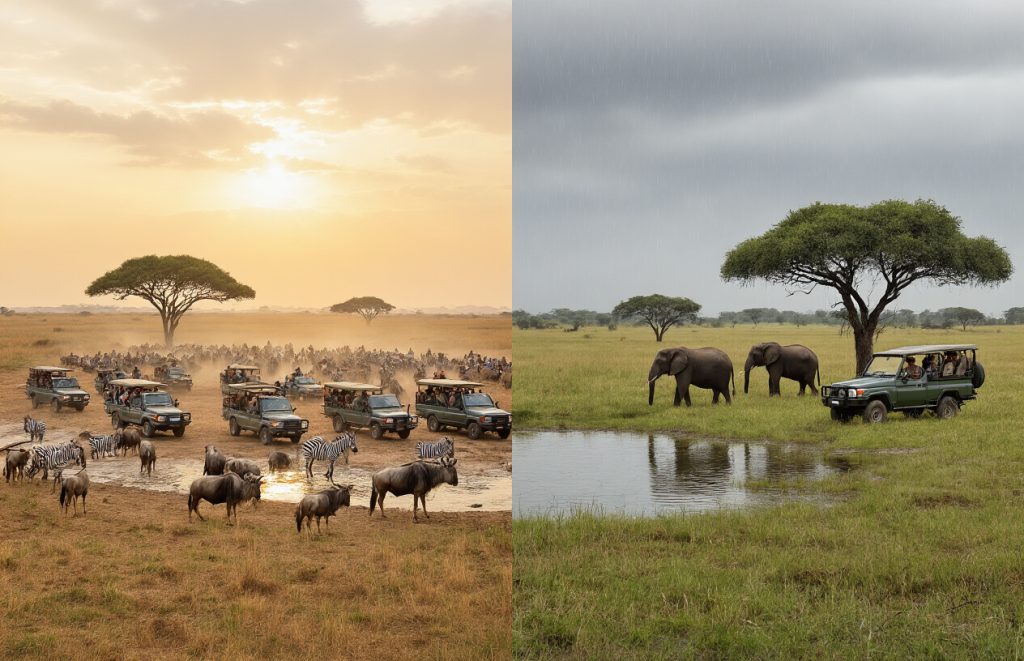
Weather considerations during budget seasons
Rainy seasons typically offer the best safari cost savings, but weather challenges require careful planning. Most off-peak safari travel occurs during wet months when temperatures can be higher and humidity uncomfortable. Daily afternoon showers may disrupt game drives, though mornings often remain clear. Pack waterproof gear and flexible clothing for varying conditions.
Wildlife visibility trade-offs
Budget safari months present mixed wildlife viewing opportunities. While predator sightings may decrease during abundant rainy periods when prey disperses, bird watching reaches its peak with migratory species arriving. Vegetation becomes lush and dense, potentially obscuring animals but creating stunning landscapes. Some animals give birth during these cheaper seasons, offering unique experiences despite reduced overall visibility.
Road accessibility during rainy periods
When is safari cheapest often coincides with challenging road conditions. Remote camps may become inaccessible, limiting destination choices during peak rainfall. Many safari operators adjust itineraries or close certain routes entirely. Four-wheel drive vehicles become essential, and some lodges offer helicopter transfers at additional cost. Research specific regions’ infrastructure before booking low season safari deals.
Photography conditions in different seasons
Cheapest safari season photography presents unique challenges and opportunities. Overcast skies during rainy periods create softer lighting but reduce vibrant sunset shots. Dust levels decrease significantly, improving air clarity for distant subjects. However, equipment protection becomes crucial with higher humidity and sudden downpours. Early morning golden hour shots remain spectacular, while afternoon storms can create dramatic atmospheric conditions for experienced photographers.
Conclusion
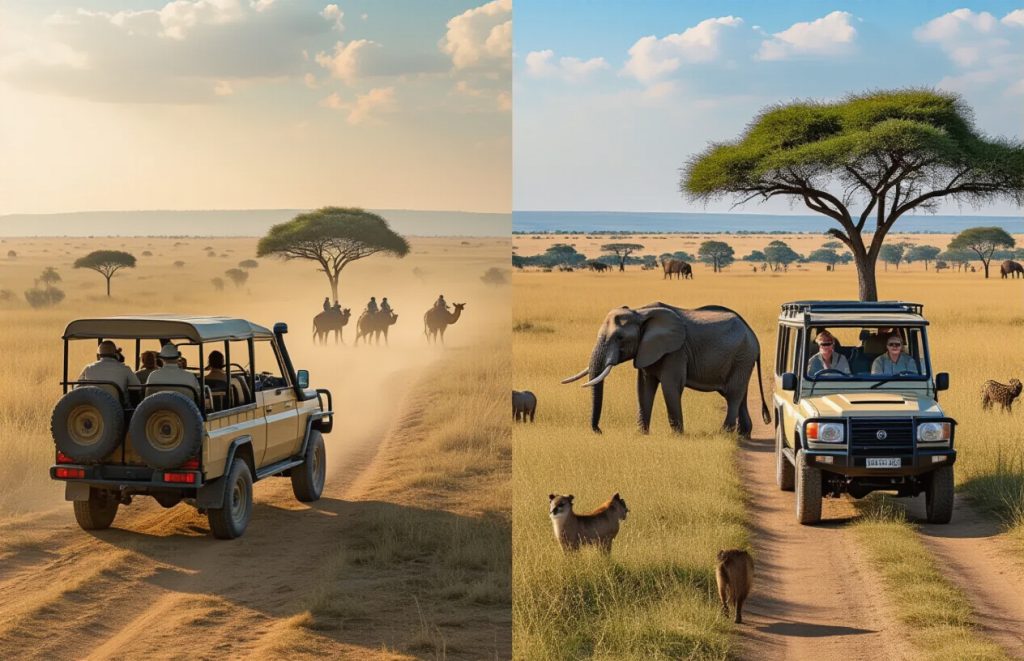
Safari prices drop significantly during the wet and shoulder seasons, typically from November through May in East Africa and during winter months in Southern Africa. These off-peak periods offer incredible value with lower accommodation rates, fewer crowds, and often more authentic wildlife interactions. While you might encounter some rain or muddy roads, many animals are actually easier to spot during these times since vegetation is lusher and water sources are more predictable.
The sweet spot for budget-conscious travelers comes down to timing your trip during each region’s low season while still getting great wildlife viewing. March through May in Tanzania and Kenya, or June through August in Southern Africa can give you the best of both worlds – reasonable prices and solid animal sightings. Don’t let peak season pricing scare you away from your dream safari – with some flexible planning and realistic expectations about weather, you can experience Africa’s incredible wildlife without breaking the bank.

Leave a Reply